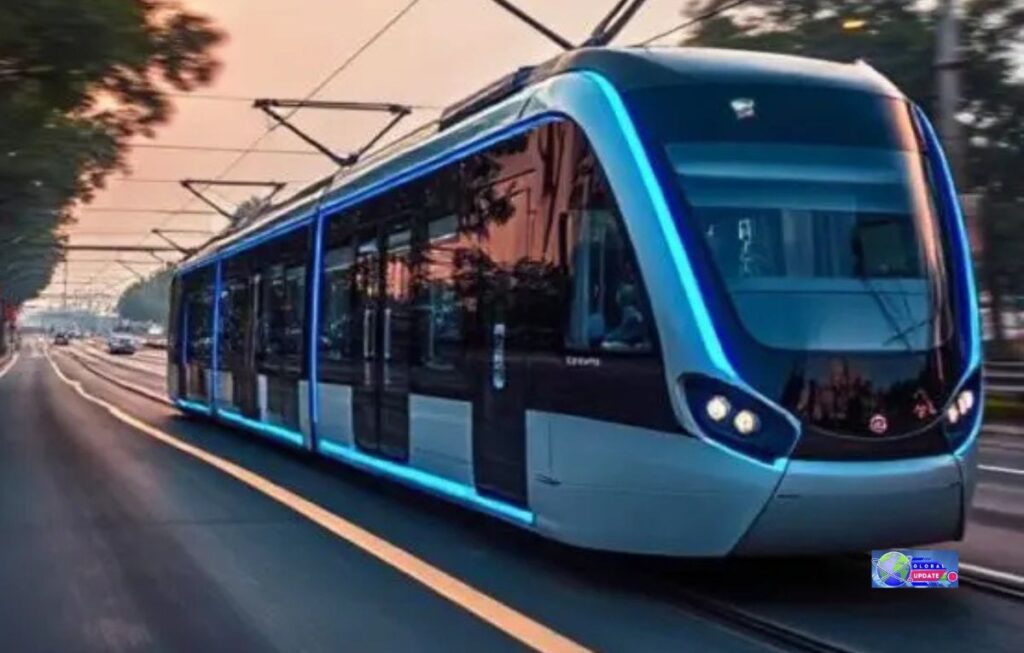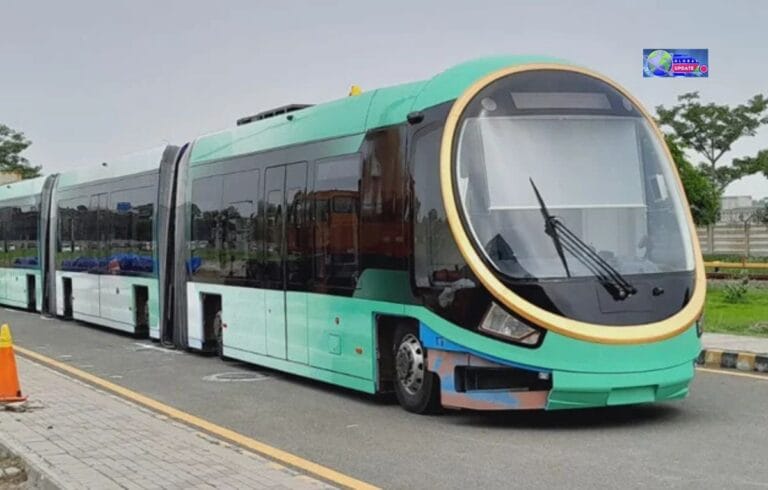The Punjab government has taken another bold step in urban mass transit, following the successful launch of the e-bus pilot project. Lahore will soon introduce Pakistan’s first electric tram service, bringing a new era of sustainable mobility to the city.
From E‑Bus to Electric Tram: The Evolution of Urban Transit
These e-buses are equipped with Wi-Fi, CCTV, and mobile charging facilities. Next. The next phase involves an 11-kilometer electric tram service, designed to complement and upgrade existing systems, such as Metrobus and the Orange Line Metro.
Tram Route, Design & Infrastructure Details
The Lahore Development Authority (LDA) has confirmed the approved tram route, which starts from Kalma Chowk, passes through Liberty, Main Market, and Mini Market, and ends at Hali Road, with ten planned stops spaced approximately 1 to 1.5 km apart.
- The project estimated to cost Rs 27 billion (~USD 100 million).
- MM Alam Road will be converted to one-way to accommodate tram tracks.into a one-way street
- A dedicated tram stop at Gaddafi Stadium is planned to enhance accessibility for events.
- Modern Finnish and Chinese tram systems, emphasizing aesthetics and rider comfort, inspire designs.
Modern Transit: Between Bus & Train
Unlike traditional rail-based trams, this project is expected to use Automated Rapid Transit (ART), or trackless trams.
Such systems provide a tram-like experience using electric buses on dedicated lanes without physical tracks, offering flexibility and lower infrastructure costs.
These vehicles will be environmentally friendly, equipped with fast-charging stations, solar energy integration, CCTV surveillance, and Wi-Fi connectivity—providing modern amenities while reducing their carbon footprint.
Why This Matters: Context and Benefits
Environmental Sustainability & Reduced Pollution
The tram initiative aligns with strategies for green urban transport, further reducing Lahore’s carbon emissions, noise pollution, and congestion, especially in busy shopping zones.
Connectivity and Urban Aesthetics
By complementing existing systems, such as the Metrobus rapid transit and Orange Line Metro, the tram service enhances network interconnectivity, especially at key hubs like Kalma Chowk and Gaddafi Stadium.
It’s also designed to enhance the cityscape—the beautification of MM Alam Road and its surrounding areas is integral to the project’s public appeal.

Public Reaction & Sentiment Insights
On social platforms, Lahore residents have expressed mixed views. Some view trams as a means to reduce car dependency, enhance urban mobility, and alleviate traffic congestion, citing examples from European cities.
Others question the high costs, arguing that a fleet of buses might serve more people at a lower expense, and wonder if resources would better spent improving existing transport infrastructure, such as Metrobus or the Orange Line.
These NLP-extracted sentiments reveal a public debate centered around cost vs. utility, aesthetics vs. function, and future-proofing transit systems.
Expert View & Personal Insight
As someone who has studied transport trends and urban planning, the electric tram initiative is a strategic blend of heritage revival (echoing old streetcars) and forward-thinking mobility.
Having ridden trams in cities abroad, I can attest to their charm and effectiveness—particularly on routes through commercial zones and tourist areas.
What excites me most is how Lahore is embracing NLP-based smart infrastructure language, signalling to citizens and investors that transit is about clean tech, comfort, connectivity, and branding, not just motion.
Strategic Content Plan
To comprehensively cover the topic and reach a broad audience, content could include:
- Detailed route maps and station profiles
- Cost breakdown, funding sources, and economic impact
- Comparison: tram vs. metro vs. bus systems
- Feature stories on citizen benefits—students, shoppers, stadium-goers
- Visuals showcasing modern tram vehicle design, stop architecture, and street remodelling
These content pillars—rooted in semantic categories such as urban transit, electric mobility, public sentiment, and infrastructure, and public sentiment—will enhance SEO performance and enrich NLP-aware tagging.
The first electric tram service in Pakistan now boasts a dedicated route.
A representative for the Orange Line stated that Lahore is preparing to introduce electric trams to its public transportation system. It comes after the introduction of electric buses.
The government purchased electric trams from China to encourage people to travel around the city in a more environmentally friendly manner.
A spokesman said that each tram can travel 25 to 27 kilometers after only 10 minutes of charging.
Two hundred fifty people can ride on the trams at once, which will have three sections. The source stated that they are assembling the first trams at the Ali Town Depot.
A test run of this new service will start. It is planned that the trial route goes from Thokar Niaz Baig to Harbanspura.
The person in charge said, “At first, the tram service will be free.” “There will be ticket prices for regular use if the test goes well.”

Summary Table
FeatureDetail
Service: Electric Tram / ART (Automated Rapid Transit)
Route Length: 11 km with ~10 stops
Main Corridors Served Kalma Chowk, Liberty, Main Market, Mini Market, Hali Road
Estimated Cost: Rs 27 billion
Design Inspiration: Finland, China tram systems
Key Features: Wi‑Fi, CCTV, solar charging, dedicated station at Gaddafi Stadium
Public Debate Themes: Cost vs benefit, sustainability, urban aesthetics
Related Systems: Orange Line Metro, Metrobus, e‑buses
Conclusion: Toward a Smarter & Greener Lahore
As Lahore transitions from e‑buses to electric trams, it takes a strategic step toward building a connected, sustainable, and aesthetically pleasing transport ecosystem.
The project prioritizes environmental advantages, improves urban mobility, and integrates multiple modes of transportation. The tram service can reshape how people move—especially in the bustling heart of the city.
It integrates commuter convenience, aesthetic appeal, and operational efficiency with contemporary technology. Lahore’s electric tram project signifies a significant shift toward future-ready public transportation.
The real test will be in implementation, affordability, and public adoption—but if done well, it could become a model for other Pakistani cities.



